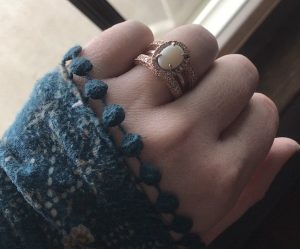Millennial Wedding and Engagement Trends
It’s no secret that millennials have shaken up the diamond industry and restructured many traditions behind weddings. Articles about how millennials are “killing diamonds” and designing rings that feel gender-neutral rings are standard. It may feel to older generations that millennials lack respect for tradition. Perhaps they are altering thousand-year-old traditions as no other age has done before. But men didn’t start wearing wedding bands until the 1940s. Princess Diana strayed from tradition at her wedding in 1981 by sporting a sapphire rather than a diamond. So, what are Millennial Wedding and Engagement Trends?
Even though weddings are often seen as beholden to strict tradition, they are fluid and ever-changing. Every couple adds their personality and flair to their wedding. Millennials are no exception. Here are a few of our favorite spins that millennials are putting on wedding and engagement traditions.
Gender Neutral Weddings

Thanks to a 2015 Supreme Court decision, same-sex marriage is legal in all 50 states. Gender is becoming accepted as fluid, shining a light on the possessive and binary language used during wedding ceremonies. Many couples are expelling gendered language to ensure that the service doesn’t feel antiquated. The correct word means everyone in the room—regardless of gender—feels comfortable on such a special day. Referring to the wedding party as the “wedding party,” rather than “bridesmaids and groomsmen,” is a simple way to make your wedding a little more gender-neutral.
New Priorities in Engagement Rings
For most millennials, it’s not about having the most significant rock to show off to their friends. Price is, of course, a more critical factor for this demographic. 29% feel like they aren’t financially ready for marriage, anyway and they are 3x more likely to never marry at all than their grandparents were.
“People in the millennial generation need to save more,” said Russell Shor, a senior industry analyst for the Gemological Institute of America. “If you’re a young person trying to buy a house in this market where housing prices have risen, and wages still haven’t caught up, obviously you aren’t thinking about buying costly diamonds.”
One resulting trend is the move towards diamond alternatives. Moissanite, for instance, has become rather popular, as it’s durability and appearance are not far off from the diamond but comes at a fraction of the cost. Millennials are also more likely to choose a colored gem-like a ruby or black diamond. It is not only more economical but also caters to the generation’s desire for more unique rings that sport-specific personality.

Buying Virtually
Millennials are typically both very busy and very accustomed to shopping online. Taking the time out of their day to go to a bunch of jewelers and try on pieces isn’t exactly appealing when a whole world of fine jewelry is at their fingertips. Not to mention, it’s much easier to compare and understand pricing and customize pieces to make it exactly what they want.
Virtual shopping also makes it easier to share ideas with one’s partner. If you see a picture of something you like on Pinterest or Instagram, you can immediately send it to your partner. It will give them an idea of what you want in that little box when they pop the question. So when it comes time to make a purchase, your partner can refer back to detailed images depicting what you like. It’s easier than having to remember what you said that one day you went to a jeweler at the mall.
TwoBirch offers a Virtual Fit service so that you can find the perfect ring for you right on our site. You can also make sure it’s going to fit perfectly the moment you slip it on.


There are no comments
Add yours